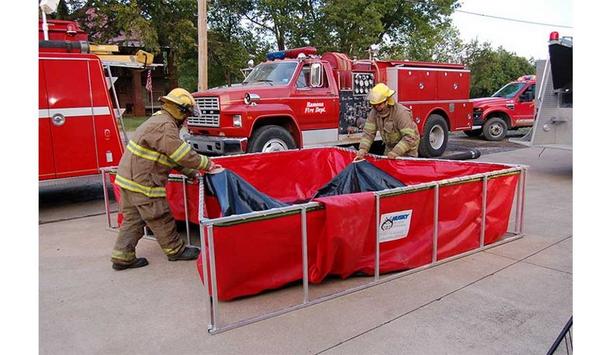Commercial fires have a long history – from London’s Tooley Street warehouse fire in 1861 right up to Belfast’s Primark store catching fire in August 2018. This article discusses some of the biggest commercial fires and legislations that were created in the aftermath.
Why Commercial Fires Are Different
Fires are disastrous no matter where they occur, whether accidental or caused by arson. Likewise, the effect that a fire has on people and businesses is dramatic. As always, prevention is the key – and commercial buildings are subject to far more stringent safety standards and legalization than domestic buildings.
Legalization
All commercial buildings in England and Wales must follow The Regulatory Reform (Fire Safety) Order 2005. All non-domestic buildings must adhere to the standards set out in this document.
The key areas under this legalization are:
- Carry out a fire risk assessment
- Consider who may be at risk
- Remove or reduce the risk from fire and provide general fire precautions to deal with possible risks
- Take additional measure if sorting flammable or explosive materials
- Create a plan for emergencies along with a record of findings
- Review your findings when necessary
Identify a person who is responsible for meeting the order, this can be:
- Employers
- Managing agent
- Occupier
- Any other person who has control over a part of the premises
Historic Commercial Fires
- The Globe Theater, London – 1613
During a performance of Henry VIII in 1613, a small spark from a cannon accidentally set the roof on fire. In under an hour, the entire theatre was burnt to the ground. It was rebuilt and reopened within a year – only to be torn down by Puritans in 1644 who thought that theatres were evil.
- Piper Alpha Oil Rig – 1988
Piper Alpha is an offshore oil and gas platform in the North Sea. It suffered a catastrophic explosion in July 1988, which is regarded as the worst offshore oil disaster in UK history. It took the lives of 165 of the 226 crew, and two crew from the standby vessel.
- Brooklyn Theater, New York – 1876
On December 5th, 1876, during a performance of The Two Orphans, the Brooklyn Theatre caught fire. The fire started on a piece of canvas from the spare set in the fly space. The crowd became panicked, leading a crush to exit from the building as the fire took hold. All 900 seats were filled that night – the fire led to the deaths of nearly 300 people and injured hundreds more.
- Booths Clothing Factory Fire, Huddersfield – 1941
The Booths Clothing factory was conducting business as usual until the fire broke out. The fire was started by a smoker’s pipe that was accidentally left alight in a raincoat pocket. The building was destroyed by the fire, killing 49 people – most of whom were women and young girls. Many were trapped in the upper floors of the five-story building, as it did not have a fire escape.
Recent Commercial Fires
- Mountbatten Building, University Of Southampton – 2005
The University of Southampton’s Mountbatten building is home to the ORC (Optoelectronics Research Center). Gas canisters exploded inside the building, which ignited various chemicals. The chemical vapors meant that firefighters were unable to use conventional methods to fight the fire. It took 100 firefighters over ten hours to bring the blaze under control. It claimed no casualties – but caused over £50m worth of damage.
- Primark, Belfast – 2018
On Tuesday 28th August 2018, a fire broke out at the top of the five-story Primark in Belfast city center. The B1 Grade building, built-in 1785, was ablaze for 3 days. It took more than 100 firefighters and 14 types of firefighting equipment to tackle the blaze. The fire gutted the building, putting it in danger of collapse – which led to the closure of surrounding businesses and streets. Thanks to a swift evacuation protocol, nobody was harmed.
- Notre-dame, Paris – 2019
The most famous cathedral in Paris was extensively damaged by a structural fire that broke out beneath the roof. Flames spread, engulfing the roof and spire. Fortunately, the stone vaulted-ceiling prevented extensive damage to the interior, which contained the burning roof as it collapsed. Works of art and religious relics were saved, although some were smoke damaged. Only three emergency workers were harmed.
- Steak And Co, London – 2018
The Steak and Co restaurant’s ventilation system caught fire on the morning of 22nd January 2018. The fire quickly spread to the first and second floors, which contained offices. Three people immediately evacuated with firefighters evacuating seven more. There were no injuries – but the road outside was closed and bus routes diverted.
- Dynasty Restaurant, Bristol – 2015
On the 16th March 2015, a fire broke out at the Dynasty Restaurant in Bristol. Nobody was injured – but following an inspection the day after from fire officials, a series of fire safety breaches were discovered. These violations led to a suspended sentence for the restaurant owner, along with a fine. The inspection highlighted the following:
- A failure to take general fire precautions
- Not completing a suitable and sufficient fire risk assessment (FRA)
- Failure to keep emergency exits clear
- Not ensuring that exits went to a place of safety
- Failure to maintain the fire alarm
- Failure to maintain fire doors and compartmentalization
What We Can Learn From These Incidents
Historical fires have led to changes in legalization. These tragedies have influenced modern design to be as safe as possible. Likewise, modern fires highlight areas for improvement – and fire safety inspections in the aftermath ensure that people are held responsible for fire safety.
At Coopers Fire, the products exist to ensure the safety of all building inhabitants, to protect buildings, and to reduce the impact of fires if they do happen.















